-
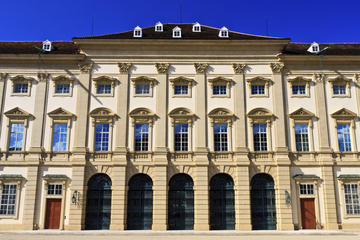 Liechtenstein Palace
Liechtenstein Palace The Liechtenstein Princely Family chose to make Vienna their home for generations until the Anschluss (annexing of Austria into Nazi Germany) of 1938 forced them back to their tiny mountain principality wedged between Switzerland and Austria. They left behind not one but two p
Liechtenstein Palace
Liechtenstein Palace The Liechtenstein Princely Family chose to make Vienna their home for generations until the Anschluss (annexing of Austria into Nazi Germany) of 1938 forced them back to their tiny mountain principality wedged between Switzerland and Austria. They left behind not one but two p
-
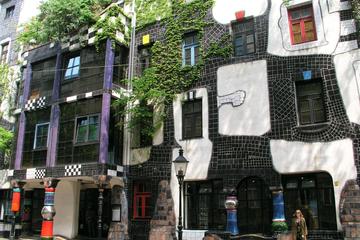 Kunst Haus Wien
Kunst Haus Wien Kunst Haus Wien in Vienna is home to the only permanent collection of the work of Friedensreich Hundertwasser in the world. The building itself, a former furniture factory, was designed by the eccentric artist, along with the neighboring apartment building. The wild facade, with it
Kunst Haus Wien
Kunst Haus Wien Kunst Haus Wien in Vienna is home to the only permanent collection of the work of Friedensreich Hundertwasser in the world. The building itself, a former furniture factory, was designed by the eccentric artist, along with the neighboring apartment building. The wild facade, with it
-
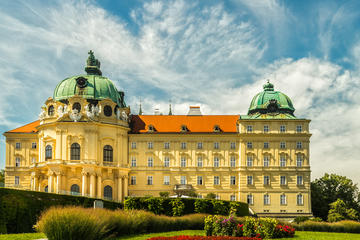 Klosterneuburg Monastery
Klosterneuburg Monastery The Klosterneuburg Monastery, or Stift Klosterneuburg in Austrian, is an Augustinian abbey founded in 1114. The baroque structure, notable for housing men’s and women’s religious orders until 1568, has undergone several facelifts over the years, most recently in 1892.The h
Klosterneuburg Monastery
Klosterneuburg Monastery The Klosterneuburg Monastery, or Stift Klosterneuburg in Austrian, is an Augustinian abbey founded in 1114. The baroque structure, notable for housing men’s and women’s religious orders until 1568, has undergone several facelifts over the years, most recently in 1892.The h
-
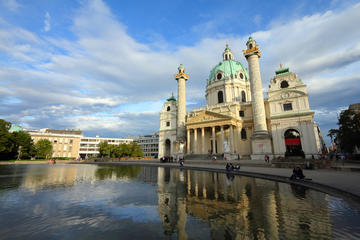 Karlsplatz
Karlsplatz One of the largest squares in Vienna, Karlsplatz is dominated by the huge, baroque Karlskirche church, which was built between 1716 and 1737 with designs influenced by the architects visit to Rome. The square is also well known for a pair of pavilions that were created in 1898 and 1899
Karlsplatz
Karlsplatz One of the largest squares in Vienna, Karlsplatz is dominated by the huge, baroque Karlskirche church, which was built between 1716 and 1737 with designs influenced by the architects visit to Rome. The square is also well known for a pair of pavilions that were created in 1898 and 1899
-
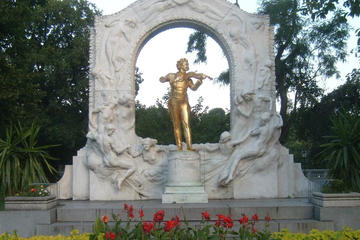 Johann Strauss Museum
Johann Strauss Museum Found in the apartment where he wrote the world-famous ‘Blue Danube’ waltz, the Johann Strauss Museum was home to Austria’s best-loved composer for seven years between 1863 and 1870. Born in Vienna in 1825, the be-whiskered ‘Waltz King’ was part of a musical dynasty that incl
Johann Strauss Museum
Johann Strauss Museum Found in the apartment where he wrote the world-famous ‘Blue Danube’ waltz, the Johann Strauss Museum was home to Austria’s best-loved composer for seven years between 1863 and 1870. Born in Vienna in 1825, the be-whiskered ‘Waltz King’ was part of a musical dynasty that incl
-
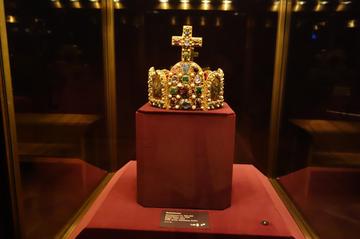 Imperial Treasury
Imperial Treasury Housed in the oldest part of the Imperial Palace in Vienna, the Imperial Treasury is one of the most significant treasuries in the world. The collection shows of the decadence of the Austro-Hungarian Empire through its 1,000 years of treasures, as well as a variety of religiously
Imperial Treasury
Imperial Treasury Housed in the oldest part of the Imperial Palace in Vienna, the Imperial Treasury is one of the most significant treasuries in the world. The collection shows of the decadence of the Austro-Hungarian Empire through its 1,000 years of treasures, as well as a variety of religiously
-
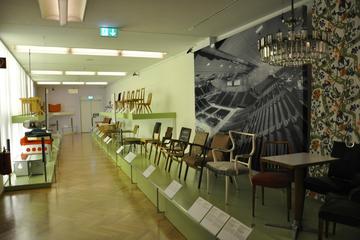 Imperial Furniture Collection
Imperial Furniture Collection Housed in two buildings connected by a modern ticket office, the Imperial Furniture Collection forms part of the Kunsthistorischen museums based at the Hofburg Palace. Both museum buildings are notable in their own right; the furniture repository at Mariahilferstrasse
Imperial Furniture Collection
Imperial Furniture Collection Housed in two buildings connected by a modern ticket office, the Imperial Furniture Collection forms part of the Kunsthistorischen museums based at the Hofburg Palace. Both museum buildings are notable in their own right; the furniture repository at Mariahilferstrasse
-
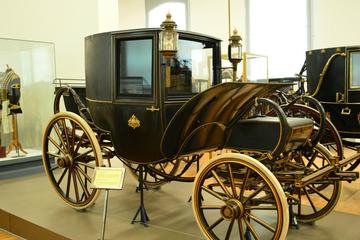 Imperial Carriage Museum
Imperial Carriage Museum Part of the complex of Kunsthistorischen museums at the Hofburg Palace, the Imperial Carriage Museum opened four years after the demise of the Austro-Hungarian Empire. It was conceived as a home for part of the redundant fleet of 600 vehicles no longer required by the Impe
Imperial Carriage Museum
Imperial Carriage Museum Part of the complex of Kunsthistorischen museums at the Hofburg Palace, the Imperial Carriage Museum opened four years after the demise of the Austro-Hungarian Empire. It was conceived as a home for part of the redundant fleet of 600 vehicles no longer required by the Impe
-
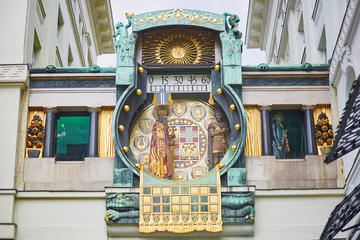 Hoher Markt Clock (Ankeruhr)
Hoher Markt Clock (Ankeruhr) Hoher Markt is Vienna’s oldest town square, dating way back to Roman times; soon after World War II, sections of the Roman military camp of Vindobona were found below the cobbles and artifacts from these remains are now displayed in the Museum of Rome at No. 3. In the
Hoher Markt Clock (Ankeruhr)
Hoher Markt Clock (Ankeruhr) Hoher Markt is Vienna’s oldest town square, dating way back to Roman times; soon after World War II, sections of the Roman military camp of Vindobona were found below the cobbles and artifacts from these remains are now displayed in the Museum of Rome at No. 3. In the
-
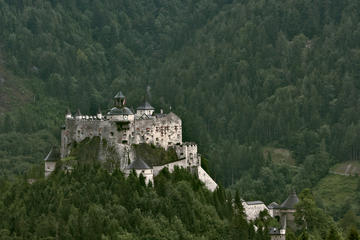 Hohenwerfen Fortress
Hohenwerfen Fortress The 900-year-old Hohenwerfen Fortress squats 510 ft (155 m) up on a rocky hilltop, surrounded by swathes of pine trees and the harsh peaks of the Tennengebirge Mountains. From its lofty position the castle dominates the village of Werfen in the Salzach Valley region of the Aus
Hohenwerfen Fortress
Hohenwerfen Fortress The 900-year-old Hohenwerfen Fortress squats 510 ft (155 m) up on a rocky hilltop, surrounded by swathes of pine trees and the harsh peaks of the Tennengebirge Mountains. From its lofty position the castle dominates the village of Werfen in the Salzach Valley region of the Aus
-
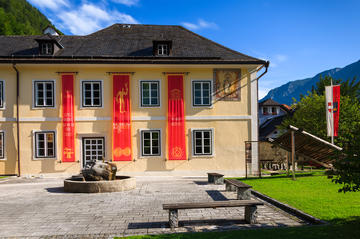 Hallstatt Museum
Hallstatt Museum Thanks to its alpine beauty, lakeside location in the heart of the Austrian Alps and the fact that it has been almost continually inhabited since Neolithic times, the picture-perfect Salzkammergut (Lake District) village of Hallstatt was UNESCO World Heritage site-listed in 1997.
Hallstatt Museum
Hallstatt Museum Thanks to its alpine beauty, lakeside location in the heart of the Austrian Alps and the fact that it has been almost continually inhabited since Neolithic times, the picture-perfect Salzkammergut (Lake District) village of Hallstatt was UNESCO World Heritage site-listed in 1997.
-
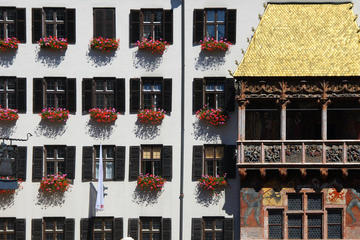 Goldenes Dachl
Goldenes Dachl Innsbruck’s iconic Goldenes Dachl (Golden Roof) is found on Herzog-Friedrich-Strasse, the main square in Innsbruck’s charming Gothic and Baroque Altstadt (Old Town). The three-story, gold-topped balcony is tacked on the Neuhof (New Court), which was built by Archduke Friedrich IV in
Goldenes Dachl
Goldenes Dachl Innsbruck’s iconic Goldenes Dachl (Golden Roof) is found on Herzog-Friedrich-Strasse, the main square in Innsbruck’s charming Gothic and Baroque Altstadt (Old Town). The three-story, gold-topped balcony is tacked on the Neuhof (New Court), which was built by Archduke Friedrich IV in
-
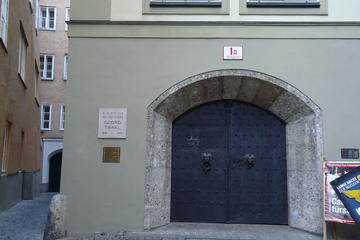 Georg Trakl Memorial (Traklhouse)
Georg Trakl Memorial (Traklhouse) The revered German-language poet Georg Trakl was born in Salzburg in 1887 and spent much of his short life building up a body of literary work that has remained with us long after he died in a military hospital in Krakow at the tender age of 27. He spent his forma
Georg Trakl Memorial (Traklhouse)
Georg Trakl Memorial (Traklhouse) The revered German-language poet Georg Trakl was born in Salzburg in 1887 and spent much of his short life building up a body of literary work that has remained with us long after he died in a military hospital in Krakow at the tender age of 27. He spent his forma
-
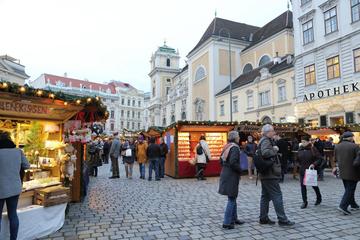 Freyung Square
Freyung Square Starting life in the Middle Ages as a civic garbage tip, Freyung Square has morphed down the centuries into one of Vienna’s prettiest public piazzas. It’s a triangular cobbled space dominated by the Austriabrunnen (Austria Fountain), which was gifted to Vienna in the 1840s by sculpt
Freyung Square
Freyung Square Starting life in the Middle Ages as a civic garbage tip, Freyung Square has morphed down the centuries into one of Vienna’s prettiest public piazzas. It’s a triangular cobbled space dominated by the Austriabrunnen (Austria Fountain), which was gifted to Vienna in the 1840s by sculpt
-
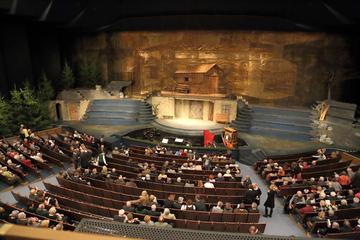 Festival Hall (Festpielhaus)
Festival Hall (Festpielhaus) Building started in 1956 on Salzburg’s Large Festival Hall, which was designed by Austrian architect and stage designer Clemens Holzmeister specifically to host the annual Salzburg Festival. The grand green-and white theater is neo-baroque in style and the main auditor
Festival Hall (Festpielhaus)
Festival Hall (Festpielhaus) Building started in 1956 on Salzburg’s Large Festival Hall, which was designed by Austrian architect and stage designer Clemens Holzmeister specifically to host the annual Salzburg Festival. The grand green-and white theater is neo-baroque in style and the main auditor
-
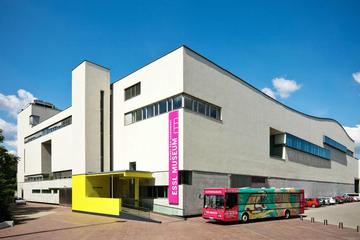 Essl Museum
Essl Museum This peerless art museum is in Klosterneuburg, near the 12th-century Augustinian monastery of the same name in Lower Austria. Housed in a futuristic gallery designed by innovative architect Heinz Tesar and built in 1999, the Essl holds one of the most important private collections of c
Essl Museum
Essl Museum This peerless art museum is in Klosterneuburg, near the 12th-century Augustinian monastery of the same name in Lower Austria. Housed in a futuristic gallery designed by innovative architect Heinz Tesar and built in 1999, the Essl holds one of the most important private collections of c
-
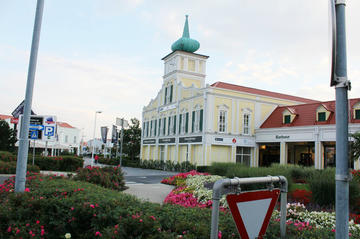 Designer Outlet Parndorf
Designer Outlet Parndorf Vienna may not be as renowned for its shopping like Milan and Paris are, but one of the biggest local attractions for bargain hunters keen to score some discounts is Designer Outlet Parndorf, conveniently located just a half hour’s drive from the city center. Also close to
Designer Outlet Parndorf
Designer Outlet Parndorf Vienna may not be as renowned for its shopping like Milan and Paris are, but one of the biggest local attractions for bargain hunters keen to score some discounts is Designer Outlet Parndorf, conveniently located just a half hour’s drive from the city center. Also close to
-
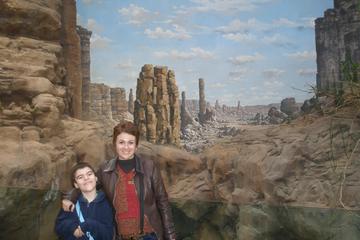 Desert Experience House
Desert Experience House The Schönbrunn Zoo in Vienna is widely regarded as one of the best in the world and is certainly the oldest and the most beautiful. Established in 1752 by the Habsburg Imperial Family, the zoo has a circular layout that spirals outwards from an elegant Baroque pavilion and
Desert Experience House
Desert Experience House The Schönbrunn Zoo in Vienna is widely regarded as one of the best in the world and is certainly the oldest and the most beautiful. Established in 1752 by the Habsburg Imperial Family, the zoo has a circular layout that spirals outwards from an elegant Baroque pavilion and
-
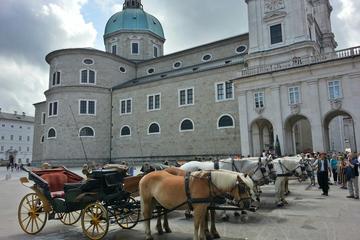 Cathedral Museum
Cathedral Museum Salzburg’s cathedral (Dom) is on the south side of the River Salzach and has Romanesque foundations, although today its appearance is exuberantly Baroque as it was rebuilt after a fire in 1598. Mozart was baptized here in 1756 and held the post of court organist from 1779, writing
Cathedral Museum
Cathedral Museum Salzburg’s cathedral (Dom) is on the south side of the River Salzach and has Romanesque foundations, although today its appearance is exuberantly Baroque as it was rebuilt after a fire in 1598. Mozart was baptized here in 1756 and held the post of court organist from 1779, writing
-
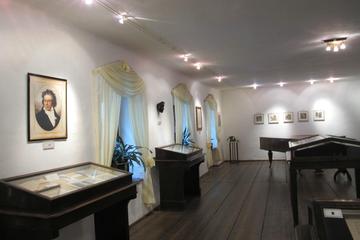 Beethoven Wohnung Heiligenstadt
Beethoven Wohnung Heiligenstadt An apartment located in Vienna’s suburb of Heiligenstadt, away from the bustle of the city, holds special meaning for many musicians. Here, Ludwig van Beethoven composed many of his famous symphonies and sonatas. In 1802, the composer retreated to this apartment in
Beethoven Wohnung Heiligenstadt
Beethoven Wohnung Heiligenstadt An apartment located in Vienna’s suburb of Heiligenstadt, away from the bustle of the city, holds special meaning for many musicians. Here, Ludwig van Beethoven composed many of his famous symphonies and sonatas. In 1802, the composer retreated to this apartment in
Total
659 -travel
FirstPage PreviousPage NextPage LastPage CurrentPage:
2/33 20-travel/Page GoTo Page:
 Liechtenstein Palace
Liechtenstein Palace The Liechtenstein Princely Family chose to make Vienna their home for generations until the Anschluss (annexing of Austria into Nazi Germany) of 1938 forced them back to their tiny mountain principality wedged between Switzerland and Austria. They left behind not one but two p
Liechtenstein Palace
Liechtenstein Palace The Liechtenstein Princely Family chose to make Vienna their home for generations until the Anschluss (annexing of Austria into Nazi Germany) of 1938 forced them back to their tiny mountain principality wedged between Switzerland and Austria. They left behind not one but two p
 Kunst Haus Wien
Kunst Haus Wien Kunst Haus Wien in Vienna is home to the only permanent collection of the work of Friedensreich Hundertwasser in the world. The building itself, a former furniture factory, was designed by the eccentric artist, along with the neighboring apartment building. The wild facade, with it
Kunst Haus Wien
Kunst Haus Wien Kunst Haus Wien in Vienna is home to the only permanent collection of the work of Friedensreich Hundertwasser in the world. The building itself, a former furniture factory, was designed by the eccentric artist, along with the neighboring apartment building. The wild facade, with it
 Klosterneuburg Monastery
Klosterneuburg Monastery The Klosterneuburg Monastery, or Stift Klosterneuburg in Austrian, is an Augustinian abbey founded in 1114. The baroque structure, notable for housing men’s and women’s religious orders until 1568, has undergone several facelifts over the years, most recently in 1892.The h
Klosterneuburg Monastery
Klosterneuburg Monastery The Klosterneuburg Monastery, or Stift Klosterneuburg in Austrian, is an Augustinian abbey founded in 1114. The baroque structure, notable for housing men’s and women’s religious orders until 1568, has undergone several facelifts over the years, most recently in 1892.The h
 Karlsplatz
Karlsplatz One of the largest squares in Vienna, Karlsplatz is dominated by the huge, baroque Karlskirche church, which was built between 1716 and 1737 with designs influenced by the architects visit to Rome. The square is also well known for a pair of pavilions that were created in 1898 and 1899
Karlsplatz
Karlsplatz One of the largest squares in Vienna, Karlsplatz is dominated by the huge, baroque Karlskirche church, which was built between 1716 and 1737 with designs influenced by the architects visit to Rome. The square is also well known for a pair of pavilions that were created in 1898 and 1899
 Johann Strauss Museum
Johann Strauss Museum Found in the apartment where he wrote the world-famous ‘Blue Danube’ waltz, the Johann Strauss Museum was home to Austria’s best-loved composer for seven years between 1863 and 1870. Born in Vienna in 1825, the be-whiskered ‘Waltz King’ was part of a musical dynasty that incl
Johann Strauss Museum
Johann Strauss Museum Found in the apartment where he wrote the world-famous ‘Blue Danube’ waltz, the Johann Strauss Museum was home to Austria’s best-loved composer for seven years between 1863 and 1870. Born in Vienna in 1825, the be-whiskered ‘Waltz King’ was part of a musical dynasty that incl
 Imperial Treasury
Imperial Treasury Housed in the oldest part of the Imperial Palace in Vienna, the Imperial Treasury is one of the most significant treasuries in the world. The collection shows of the decadence of the Austro-Hungarian Empire through its 1,000 years of treasures, as well as a variety of religiously
Imperial Treasury
Imperial Treasury Housed in the oldest part of the Imperial Palace in Vienna, the Imperial Treasury is one of the most significant treasuries in the world. The collection shows of the decadence of the Austro-Hungarian Empire through its 1,000 years of treasures, as well as a variety of religiously
 Imperial Furniture Collection
Imperial Furniture Collection Housed in two buildings connected by a modern ticket office, the Imperial Furniture Collection forms part of the Kunsthistorischen museums based at the Hofburg Palace. Both museum buildings are notable in their own right; the furniture repository at Mariahilferstrasse
Imperial Furniture Collection
Imperial Furniture Collection Housed in two buildings connected by a modern ticket office, the Imperial Furniture Collection forms part of the Kunsthistorischen museums based at the Hofburg Palace. Both museum buildings are notable in their own right; the furniture repository at Mariahilferstrasse
 Imperial Carriage Museum
Imperial Carriage Museum Part of the complex of Kunsthistorischen museums at the Hofburg Palace, the Imperial Carriage Museum opened four years after the demise of the Austro-Hungarian Empire. It was conceived as a home for part of the redundant fleet of 600 vehicles no longer required by the Impe
Imperial Carriage Museum
Imperial Carriage Museum Part of the complex of Kunsthistorischen museums at the Hofburg Palace, the Imperial Carriage Museum opened four years after the demise of the Austro-Hungarian Empire. It was conceived as a home for part of the redundant fleet of 600 vehicles no longer required by the Impe
 Hoher Markt Clock (Ankeruhr)
Hoher Markt Clock (Ankeruhr) Hoher Markt is Vienna’s oldest town square, dating way back to Roman times; soon after World War II, sections of the Roman military camp of Vindobona were found below the cobbles and artifacts from these remains are now displayed in the Museum of Rome at No. 3. In the
Hoher Markt Clock (Ankeruhr)
Hoher Markt Clock (Ankeruhr) Hoher Markt is Vienna’s oldest town square, dating way back to Roman times; soon after World War II, sections of the Roman military camp of Vindobona were found below the cobbles and artifacts from these remains are now displayed in the Museum of Rome at No. 3. In the
 Hohenwerfen Fortress
Hohenwerfen Fortress The 900-year-old Hohenwerfen Fortress squats 510 ft (155 m) up on a rocky hilltop, surrounded by swathes of pine trees and the harsh peaks of the Tennengebirge Mountains. From its lofty position the castle dominates the village of Werfen in the Salzach Valley region of the Aus
Hohenwerfen Fortress
Hohenwerfen Fortress The 900-year-old Hohenwerfen Fortress squats 510 ft (155 m) up on a rocky hilltop, surrounded by swathes of pine trees and the harsh peaks of the Tennengebirge Mountains. From its lofty position the castle dominates the village of Werfen in the Salzach Valley region of the Aus
 Hallstatt Museum
Hallstatt Museum Thanks to its alpine beauty, lakeside location in the heart of the Austrian Alps and the fact that it has been almost continually inhabited since Neolithic times, the picture-perfect Salzkammergut (Lake District) village of Hallstatt was UNESCO World Heritage site-listed in 1997.
Hallstatt Museum
Hallstatt Museum Thanks to its alpine beauty, lakeside location in the heart of the Austrian Alps and the fact that it has been almost continually inhabited since Neolithic times, the picture-perfect Salzkammergut (Lake District) village of Hallstatt was UNESCO World Heritage site-listed in 1997.
 Goldenes Dachl
Goldenes Dachl Innsbruck’s iconic Goldenes Dachl (Golden Roof) is found on Herzog-Friedrich-Strasse, the main square in Innsbruck’s charming Gothic and Baroque Altstadt (Old Town). The three-story, gold-topped balcony is tacked on the Neuhof (New Court), which was built by Archduke Friedrich IV in
Goldenes Dachl
Goldenes Dachl Innsbruck’s iconic Goldenes Dachl (Golden Roof) is found on Herzog-Friedrich-Strasse, the main square in Innsbruck’s charming Gothic and Baroque Altstadt (Old Town). The three-story, gold-topped balcony is tacked on the Neuhof (New Court), which was built by Archduke Friedrich IV in
 Georg Trakl Memorial (Traklhouse)
Georg Trakl Memorial (Traklhouse) The revered German-language poet Georg Trakl was born in Salzburg in 1887 and spent much of his short life building up a body of literary work that has remained with us long after he died in a military hospital in Krakow at the tender age of 27. He spent his forma
Georg Trakl Memorial (Traklhouse)
Georg Trakl Memorial (Traklhouse) The revered German-language poet Georg Trakl was born in Salzburg in 1887 and spent much of his short life building up a body of literary work that has remained with us long after he died in a military hospital in Krakow at the tender age of 27. He spent his forma
 Freyung Square
Freyung Square Starting life in the Middle Ages as a civic garbage tip, Freyung Square has morphed down the centuries into one of Vienna’s prettiest public piazzas. It’s a triangular cobbled space dominated by the Austriabrunnen (Austria Fountain), which was gifted to Vienna in the 1840s by sculpt
Freyung Square
Freyung Square Starting life in the Middle Ages as a civic garbage tip, Freyung Square has morphed down the centuries into one of Vienna’s prettiest public piazzas. It’s a triangular cobbled space dominated by the Austriabrunnen (Austria Fountain), which was gifted to Vienna in the 1840s by sculpt
 Festival Hall (Festpielhaus)
Festival Hall (Festpielhaus) Building started in 1956 on Salzburg’s Large Festival Hall, which was designed by Austrian architect and stage designer Clemens Holzmeister specifically to host the annual Salzburg Festival. The grand green-and white theater is neo-baroque in style and the main auditor
Festival Hall (Festpielhaus)
Festival Hall (Festpielhaus) Building started in 1956 on Salzburg’s Large Festival Hall, which was designed by Austrian architect and stage designer Clemens Holzmeister specifically to host the annual Salzburg Festival. The grand green-and white theater is neo-baroque in style and the main auditor
 Essl Museum
Essl Museum This peerless art museum is in Klosterneuburg, near the 12th-century Augustinian monastery of the same name in Lower Austria. Housed in a futuristic gallery designed by innovative architect Heinz Tesar and built in 1999, the Essl holds one of the most important private collections of c
Essl Museum
Essl Museum This peerless art museum is in Klosterneuburg, near the 12th-century Augustinian monastery of the same name in Lower Austria. Housed in a futuristic gallery designed by innovative architect Heinz Tesar and built in 1999, the Essl holds one of the most important private collections of c
 Designer Outlet Parndorf
Designer Outlet Parndorf Vienna may not be as renowned for its shopping like Milan and Paris are, but one of the biggest local attractions for bargain hunters keen to score some discounts is Designer Outlet Parndorf, conveniently located just a half hour’s drive from the city center. Also close to
Designer Outlet Parndorf
Designer Outlet Parndorf Vienna may not be as renowned for its shopping like Milan and Paris are, but one of the biggest local attractions for bargain hunters keen to score some discounts is Designer Outlet Parndorf, conveniently located just a half hour’s drive from the city center. Also close to
 Desert Experience House
Desert Experience House The Schönbrunn Zoo in Vienna is widely regarded as one of the best in the world and is certainly the oldest and the most beautiful. Established in 1752 by the Habsburg Imperial Family, the zoo has a circular layout that spirals outwards from an elegant Baroque pavilion and
Desert Experience House
Desert Experience House The Schönbrunn Zoo in Vienna is widely regarded as one of the best in the world and is certainly the oldest and the most beautiful. Established in 1752 by the Habsburg Imperial Family, the zoo has a circular layout that spirals outwards from an elegant Baroque pavilion and
 Cathedral Museum
Cathedral Museum Salzburg’s cathedral (Dom) is on the south side of the River Salzach and has Romanesque foundations, although today its appearance is exuberantly Baroque as it was rebuilt after a fire in 1598. Mozart was baptized here in 1756 and held the post of court organist from 1779, writing
Cathedral Museum
Cathedral Museum Salzburg’s cathedral (Dom) is on the south side of the River Salzach and has Romanesque foundations, although today its appearance is exuberantly Baroque as it was rebuilt after a fire in 1598. Mozart was baptized here in 1756 and held the post of court organist from 1779, writing
 Beethoven Wohnung Heiligenstadt
Beethoven Wohnung Heiligenstadt An apartment located in Vienna’s suburb of Heiligenstadt, away from the bustle of the city, holds special meaning for many musicians. Here, Ludwig van Beethoven composed many of his famous symphonies and sonatas. In 1802, the composer retreated to this apartment in
Beethoven Wohnung Heiligenstadt
Beethoven Wohnung Heiligenstadt An apartment located in Vienna’s suburb of Heiligenstadt, away from the bustle of the city, holds special meaning for many musicians. Here, Ludwig van Beethoven composed many of his famous symphonies and sonatas. In 1802, the composer retreated to this apartment in